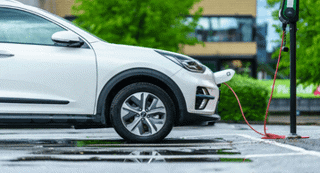Aviva has decided the time is right to launch an insurance product linked to telematics, three years after it turned its back on the market.
But this time around, the insurer’s business model will not be based on providing black boxes to fleets to ensure it receives a constant flow of data, such as driving style and distances covered.
Instead, its telematics insurance product will simply tap into fleets that are already using the technology and who show a commitment to improving risk management strategies.
Mark Keavney, development manager, commercial product development at Aviva, said: “We feel the time is now right for us to re-enter the market with a hassle-free, no cost solution.”
Aviva’s offering is aimed at organisations operating either cars or commercials and will only be offered through its broker network.
It will be available on Aviva’s Fleetwise, Fleetwise Skeleton or Fleetwise Self Drive Hire products and at least 50% of the fleet – a minimum of 10 vehicles – must have telematics units installed and operational.
The technology used must meet a range of minimum requirements, including: maximum speed notification when a vehicle exceeds 70mph; the ability to record abnormal acceleration, braking, cornering, as well as the duration and distance of each journey; and the ability to identify both the vehicle and the driver.
However, customers will only have to provide data if the insurer requests it. Instead, they will be required to review their own data and implement any necessary changes on a monthly basis, while working with one of Aviva’s 12 fleet risk advisors located across the country.
Aviva believes it’s an approach which can reduce its exposure, while providing an additional benefit for fleets.
“We won’t be offering an upfront discount, but there’s an expectation that by embracing risk management claims costs will reduce and we will be able to give something back to the customer,” said Keavney.
“Based on the performance of the fleet, if certain criteria are met specific to the customer we will give them a premium rebate mid-way through the period of insurance and there’s also the potential that in the long run their rates will go down.”
Aviva’s approach is significantly different from its earlier foray into the market in 2005 when, as Norwich Union, it launched its pay-as-you-drive product.
Back then, the technology proved too expensive and only 15,500 units were sold in the first two years. Nevertheless, it did result in 30% fewer claims and a 50% reduction in claims ratio.
More follows on page two...
























Login to comment
Comments
No comments have been made yet.